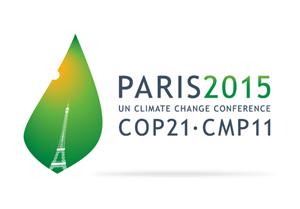Sendai’s role in ecosystems underlined at COP21
Governments, civil society and the private sector are delivering on the Sendai Framework for Disaster Risk Reduction and building resilience to climate-related disasters through efforts to protect ecosystems and biodiversity. At the COP21 climate conference, the International Union for Conservation of Nature (IUCN), the Secretariat for the Convention on Biodiversity and Conservational International teamed up with national leaders in a special event entitled “Ecosystem-based approaches to climate change adaptation and disaster risk reduction”.The session was designed to showcase achievements and explore strategies for scaling up efforts.
“The Sendai Framework is sharpening focus on the vital role that ecosystems play in reducing disaster risk, particularly in shared river basins, wetlands and coastal areas,” said Radhika Murti, Programme Coordinator for Disaster Risk Reduction at IUCN.
Ecosystems such as forests can act as buffers against natural hazards, notably flooding. One of the most telling examples comes from the Caribbean, where Haiti’s forest cover is just 3.8 percent while its much greener island neighbor the Dominican Republic boasts 40.8 percent.
When Hurricane Jeanne struck in 2004, casualties in Haiti amounted to 2,754. In contrast, there were fewer than 20 reported deaths in the Dominican Republic.
The good news is that since then, Haiti has made great strides in integrating disaster risk reduction in its efforts to protect essential ecosystems. Such investments are all the more important in a changing climate, particularly in countries that are already facing radical changes in the seasonality of rainfall and the frequency and intensity of hurricanes and tropical storms.
The value of ecosystem-based approaches to reducing disaster risk is being viewed in a new light and the business case is more compelling.
According to recent analyses from Swiss Re, every dollar invested in ecosystem-based disaster and climate change adaptation means saving up to 20 dollars from mitigating and even avoiding the consequences of disasters. In Vietnam, planting mangroves on 12,000 hectares cost US$1.1 million but saved annual levee maintenance costs of US$7.3 million. Similarly, because of the recognized value of swamps and salt marches after Hurricane Katrina in 2005 in the United States, the US Congress approved US$500 million for ecosystem restoration.
Braulio Ferreira de Souza Dias, Executive Secretary of the Convention on Biological Diversity, underlined the importance of explicit references of ecosystem protection for reducing the risk of disasters contained in the Sendai Framework.
Efforts to scale-up investments in ecosystems-based solutions, however, will rely on the readiness of government to support integrated approaches, create incentives for investments in ecosystems and unravel conflicting policies and subsidies that continue to drive environmental degradation.
The 15-year Sendai Framework, agreed at the Third UN World Conference for Disaster Risk Reduction in March this year, identifies poor land management, unsustainable use of natural resources and declining ecosystems as underlying drivers of disaster risk that need to be tackled. It seeks to address existing challenges and prepare for future ones, including through investing in the environment. It sets the goal of preventing new and reducing existing disaster risk through the implementation of integrated and inclusive environmental measures, among others.
The Sendai Framework also calls for the active engagement of environmental managers , civil society and the private sector in national disaster risk reduction platforms and for the adoption and implementation of disaster risk reduction strategies and plans aimed at strengthening economic, social, health and environmental resilience. It goes further to specify a range of priority actions focused on implementation of integrated environmental and natural resource management approaches that incorporate disaster risk reduction.
Additional measures focus on the application of science to decision-making. Science and indigenous knowledge is needed to strengthen ecosystem considerations and anticipated environmental changes in disaster risk modelling, assessment, mapping, monitoring. New and improved metrics are also required to evaluate and understand the environmental impacts of disasters.
In short, environmental conditions, environmental knowledge and environmental governance will affect outcomes across the Sendai Framework’s seven global targets.
Aggiungi un commento
Accedi dalla colonna di destra per aggiungere un commento.


Commenti (0)